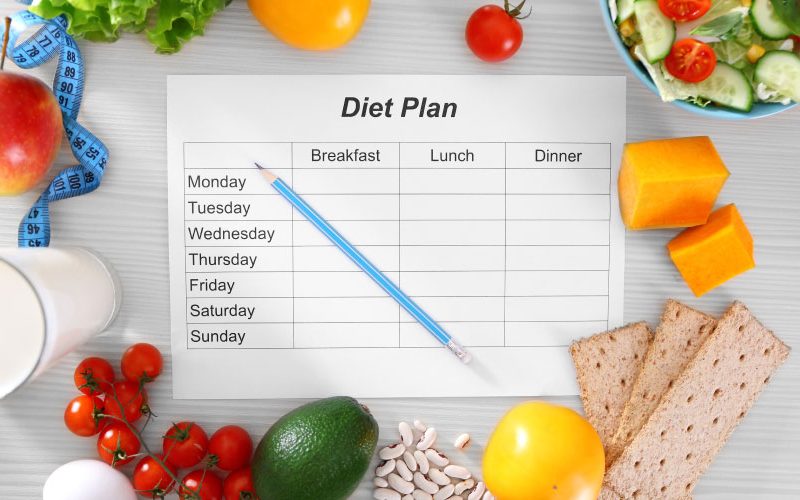Introduction
Achieving healthy weight loss involves more than just counting calories. It requires a tailored approach that considers individual metabolism, Body Mass Index (BMI), lifestyle, and specific health conditions such as diabetes. For many individuals seeking a structured path, adopting a diet chart for weight loss that reflects these personalised factors is essential.
This article explores an ideal Indian diet plan for weight management, how metabolism and BMI influence food choices, and how a diet chart for diabetic patient can be integrated into a comprehensive health strategy.
Understanding metabolism and BMI
Metabolism refers to the body’s process of converting food into energy. Individuals with a faster metabolic rate tend to burn calories more quickly than those with a slower metabolism. BMI, on the other hand, is a measure of body fat based on height and weight, helping determine whether one is underweight, normal weight, overweight, or obese.
A successful diet chart for weight loss must accommodate variations in metabolism and BMI to ensure sustainable and effective outcomes.
Principles of an Indian diet chart for weight loss
An ideal diet chart for weight loss based on Indian cuisine includes foods that are nutrient-dense, low in unhealthy fats, and balanced across macronutrients. Key principles include:
- Calorie deficit: Consuming fewer calories than the body expends leads to weight loss.
- Balanced nutrition: Incorporating appropriate amounts of carbohydrates, proteins, and healthy fats.
- High fibre intake: Including whole grains, vegetables, and fruits to aid digestion and satiety.
- Low glycaemic index foods: Choosing foods that prevent sharp spikes in blood sugar levels.
- Hydration: Drinking adequate water to support metabolic processes and reduce unnecessary snacking.
These principles ensure that the diet chart for weight loss promotes fat reduction without compromising nutritional needs.
Sample Indian diet chart for weight loss based on metabolism
Here is a sample day’s plan adaptable to different metabolic rates:
1. Early morning:
- A glass of warm water with lemon
- Handful of soaked almonds
2. Breakfast:
- Vegetable upma with a bowl of curd or
- Moong dal chilla with mint chutney
3. Mid-morning snack:
- Fresh fruit such as an apple or guava
4. Lunch:
- Two multigrain rotis with sabzi (vegetables)
- A bowl of dal
- Mixed salad
5. Evening snack:
- Green tea with roasted chana or
- Vegetable soup
6. Dinner:
- Grilled paneer or tofu with sautéed vegetables or
- Light khichdi with curd
This balanced diet chart for weight loss ensures sustained energy levels, supports metabolism, and promotes gradual fat loss.
Customising the diet chart for diabetic patients
When crafting a diet chart for diabetic patient, it is crucial to prioritise blood sugar regulation alongside weight loss goals. Key elements include:
- Low glycaemic index foods: Incorporating brown rice, oats, lentils, and green leafy vegetables.
- Controlled carbohydrate intake: Spreading carbohydrate consumption evenly throughout the day.
- High fibre foods: Ensuring high intake of fibrous vegetables and legumes.
- Adequate protein: Including pulses, paneer, fish, or eggs to stabilise blood sugar levels.
- Healthy fats: Adding nuts, seeds, and limited quantities of oils like olive or mustard oil.
For diabetic individuals, the diet chart for diabetic patient must be stricter in portion control and vigilant against hidden sugars.
Sample diet chart for diabetic patient with weight loss goals
1. Early morning:
- Fenugreek seed water
- Handful of walnuts
2. Breakfast:
- Oats porridge with cinnamon and flaxseeds or
- Vegetable stuffed multigrain roti
3. Mid-morning snack:
- Cucumber sticks or a handful of peanuts
4. Lunch:
- Brown rice with mixed vegetable curry
- Sprouted moong salad
5. Evening snack:
- Buttermilk or green tea with almonds
6. Dinner:
- Grilled fish or dal and lightly sautéed vegetables
Integrating this sample diet chart for diabetic patient ensures effective blood sugar management while supporting healthy weight reduction.
Tips for maximising results with your diet plan
- Portion control: Even healthy foods can lead to weight gain if consumed in excessive amounts.
- Regular physical activity: Exercise enhances metabolism and accelerates fat loss.
- Meal timing: Eating at regular intervals prevents overeating and improves digestion.
- Sleep hygiene: Poor sleep disrupts hormones that regulate hunger and metabolism.
- Stress management: Chronic stress can lead to emotional eating and insulin resistance.
Combining these lifestyle changes with a carefully planned diet chart for weight loss enhances long-term success.
Foods to avoid for effective weight loss and diabetes control
- Refined sugars: Cakes, pastries, and sugary drinks worsen weight and blood sugar control.
- Refined carbohydrates: White bread, white rice, and maida-based foods offer little nutrition.
- Processed foods: Chips, instant noodles, and ready-to-eat meals are high in unhealthy fats and additives.
- High-fat dairy and meats: Full-fat cheese, butter, and red meats should be consumed sparingly.
Avoiding these foods is essential whether following a general diet chart for weight loss or a specialised diet chart for diabetic patient.
Conclusion: Personalised planning for sustainable health
Weight loss and lifestyle improvement are not about extreme restrictions but about personalised, sustainable changes. By understanding individual metabolism and BMI, and by crafting an appropriate diet chart for weight loss, individuals can achieve their fitness and health goals more efficiently.
For those managing diabetes, a customised diet chart for diabetic patient not only supports weight management but also maintains stable blood sugar levels, reducing the risk of complications.
With mindful eating, balanced nutrition, and consistent effort, adopting the right Indian diet plan can transform health, energy levels, and overall quality of life.












